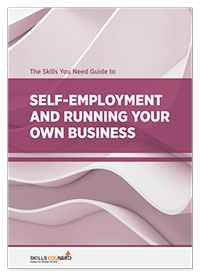4 Resume Tips for Data Analysts
See also: Writing a CV or ResumeData analysts are in demand, not only in the business arena but in almost all sectors of society. To stand out in the field of data analytics, you should be able to highlight the skills that make you the best candidate for the role. Since there is a lot of competition for these positions, you must immediately show your skills and experience in a way that echoes the job description of the vacancy. From the time the employer reads the resume, they will already know who they’re looking for.
If you are ready, read on to find out how to create an effective resume objective. There are also examples you can refer to when you need to write your own.
What Makes A Data Analyst Resume Different?
With your resume, you must show that you can interpret the results from complex data sets. This will help potential employers weigh up whether you can help make meaningful decisions for them.
Since data analysts tackle technical and advanced processes in IT systems, your resume should highlight your skills within this area.

Tips for Writing a Data Analyst Resume
Below are the vital sections of a data analyst resume. There are also tips in each section to help make your resume stand out:
1. Find the Appropriate Format
Whatever field in data analytics you’re applying for, you should first choose the format of the resume. There’s no standardized format, and this will vary depending on what skills or experience you wish to highlight.
You need to know first what’s relevant and important to your choice of employer. Relevant skills for a data analyst resume should also be outlined together with your experience. After outlining the important information, you can easily find the best resume format that suits you.
Other tips when choosing the format for your data analyst resume include the following:
The main goal of a resume format is to let the employer identify the right candidate right away. Employers can determine if you’re qualified within minutes. The right formatting can easily target that.
-
Make sure that the resume is error-free. There should be no grammatical and spelling errors at all. You need to make that first impression from your resume last.
Clearly show your previous work and tasked projects. You should highlight all the relevant tasks you did to let them know that you are capable of the job.
You can use bullet points to list relevant experiences and skills.
Make your resume a single page to let the employer see immediately your qualifications. If your credentials cannot fit on one page, limit yourself to two pages
2. Make a Career Objective or Qualifications Summary
You need to include a clear objective that will start the flow of your resume. With a data analyst role, it’s vital to demonstrate a clear career objective. The role dwells more on the technical and complex skills that are critical to the business. Thus, with your objective, you must meet the qualifications needed for the role.
You need to immediately show the employer your skills and abilities, which are needed for the role, in the qualification's summary. You can refer to the job post to align your skills with the skills required. By doing this, the employer will see that you are well matched to the role.
As mentioned previously, you need to customize your resume’s objective to the position that you’re applying for. Do not use a generic resume.
From the sample below, you’ll see how the career objective showcases the skills of the candidate:
Experienced data analyst with more than eight years of experience in analyzing and interpreting data used in critical business decision-making. Possessing a strong background in analytics, mathematics, and statistics. Proficient in using analysis tools relative to interpret data into meaningful business solutions.
This objective isn’t only specifying the technical skills of the candidate, but it also shows the candidate’s capacity to perform in the role.

3. Time to Showcase Your Skills
You need to meet two goals in creating your resume.
The first is to include the keywords the employer is looking for in the specific role you’re applying for. Many companies use an applicant tracking system or ATS that filters the resumes of candidates looking for a particular word or set of words in their resumes.
The second is to let the employer know that the technical capabilities and skills are shown in your resume.
If you want to pass the applicant tracking system, you should list all the relevant skills you possess, especially those technical skills you have experience in. Furthermore, include the coding languages and applications you used in your previous job.
You must also be specific in your coding language skills. If you know data manipulation or database cleaning, or just purely coding using Python, you must specify this.
You can also be more specific in your skills section. Avoid using blanket terms, like ‘data analysis’ or ‘data mining,’ as these can easily make the employer not call you for an interview.
There are several ways to formulate your skills section. You can classify them by how proficient you are in your working knowledge with those skills. You may use the categories ‘Advanced,’ ‘Intermediate,’ and ‘Novice.’
4. Quantify Your Experience
You need to quantify your experience by adding numbers and time, if possible. This will make your resume look more professional and impactful. Don’t just use basic sentences about the experience you have. You can put the accomplishments or improvements that resulted from your efforts.
An example is as follows:
Analyzed 5,000+ addresses in Microsoft Excel, successfully drawing conclusions about the increase in demand of stocks. Developed operations and procedures that led to the improvement of factory output by 18%.
By adding these numbers, you can more accurately describe your capabilities to the employer. Remember that employers want concrete results for their operations. By showing them that there were significant results because of your skills, you might be chosen as the right candidate.
Further Reading from Skills You Need
The Skills You Need Guide to Getting a Job
Develop the skills you need to get that job.
This eBook is essential reading for potential job-seekers. Not only does it cover identifying your skills but also the mechanics of applying for a job, writing a CV or resume and attending interviews.
Conclusion
With the tips mentioned above, you can now formulate a tailor-made resume for that data analyst job. You can also research more on the Internet for various formats, tips, suggestions, and examples to make your resume much more impactful. You can continually revise until you come up with a resume that will make you stand out from other applicants.
You need a lot of patience, research, and thorough formulation when crafting an effective resume. Remember that first impressions last. If you want to get that job, follow the tips discussed above, and you’re all set.

About the Author
Lyndon Fisher is an employee management specialist. He works with various organizations, helping businesses increase employee productivity and retention. Lyndon imparts his knowledge and skills through his employee management-related articles in various online publications.


